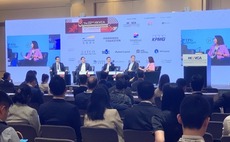
Japan's secondary funds look to consolidate
The cross-ownership of Japanese companies creates rich pickings for secondaries players looking to gather up and exit
When a Japanese logistics firm ran into trouble in the 1980s, a debt-for-equity swap left a clutch of individual creditors with shares in a company they never wanted to own and little hope of a return on their capital. A secondaries fund stepped in, offered the creditors a way out by picking up their shares at a discount, turned the company around and sold it to a strategic investor.
This is one of relatively few examples of Japan's nascent direct secondaries market at work. But it is an investment model that should, in theory, have much to offer. The proliferation of cross-shareholding whereby commercial ties between companies were solidified by stock holders in one firm taking an equity interest in another has created dispersed and often inefficient ownership structures. Secondary investors could tidy up.
"I believe that secondary funds could collect minority shares of target companies from individual investors and build up large positions so they can make swift exits to other buyers," one Japanese LP tells AVCJ. "There should be increasing opportunities for secondary funds to work with local industries."
A local GP suggests that further openings for secondary investors could come through purchasing interests from funds that are reaching their end of their lives and need to return capital to LPs.
It has taken time for secondaries in general to bed down in Japan. The country's private equity industry is less than two decades old so the Western habit of trading LP interests as part of standard portfolio management is not yet ingrained, although industry players say that awareness is growing. Direct secondary investment is more widely recognized and several dedicated funds have been raised in the last few years.
The pioneers
Japan Asia Investment Corp. (JAIC) is seen as the pioneer, raising its first vehicle in 2002 and then a second, worth $104.8 million, in 2005. The two funds have so far made approximately 50 investments. JAIC also launched a secondary fund with CyberAgent Ventures, the investment arm of CyberAgent, Japan's online social network developer and internet media business operator. This vehicle received $34.4 million in commitments and targets internet-related firms.
In 2003, local private equity stalwart Ant Capital Partners raised $32.8 for its first secondary fund, Ant Bridge No.1 Venture Capital. It was highly successful, delivering a gross IRR of 121% and enabling the company to close its next fund at $258.1 million two years later. This vehicle and Primasia Ant Bridge No.1, which raised $77 million in 2006, have a wider remit: both seek opportunities across the region, with a particular focus on Japan and Taiwan, and they can purchase LP interests as well as do direct deals.
As it stands, one half the Ant Bridge secondary funds' assets are in Japan and one third are in Greater China. Direct investments account for three quarters of the portfolio with the remainder in LP interests.
Ant Bridge No.3 Private Equity is currently fundraising and has so far secured commitments of $17 million against a full target of $150 million, according to AVCJ Research.
Investment rationale
"It is difficult to pay a premium for shares and then exit at a higher price," says Shunsa Hayashi, managing partner of Ant Capital's secondary investment group. "What we aim to do is buy stakes at reasonable prices and sell them on to new investors as quickly as possible. It is important to let the private equity market have liquidity."
He says that average deal size is $1-5 million and the quickest exit has been seven days, although the process normally takes a few years. Industry sources attest that Ant Bridge dominates the market, with JAIC largely inactive at present.
The level of participation is not huge, but other private equity firms are expected to enter the market as local industries look for solutions to succession issues and stagnating business. This complements the growing role of private equity in corporate restructuring, particularly among mid-size companies.
With Japan's economy shrinking, further consolidation through M&A is seen as inevitable. Secondary investors are well positioned to be facilitate this process, buying out loose consortiums of minority shareholders and reshaping firms into appealing M&A targets.
"We are like a solution provider for investors," says Hayashi.
Latest News
Asian GPs slow implementation of ESG policies - survey
Asia-based private equity firms are assigning more dedicated resources to environment, social, and governance (ESG) programmes, but policy changes have slowed in the past 12 months, in part due to concerns raised internally and by LPs, according to a...
Singapore fintech start-up LXA gets $10m seed round
New Enterprise Associates (NEA) has led a USD 10m seed round for Singapore’s LXA, a financial technology start-up launched by a former Asia senior executive at The Blackstone Group.
India's InCred announces $60m round, claims unicorn status
Indian non-bank lender InCred Financial Services said it has received INR 5bn (USD 60m) at a valuation of at least USD 1bn from unnamed investors including “a global private equity fund.”
Insight leads $50m round for Australia's Roller
Insight Partners has led a USD 50m round for Australia’s Roller, a venue management software provider specializing in family fun parks.







